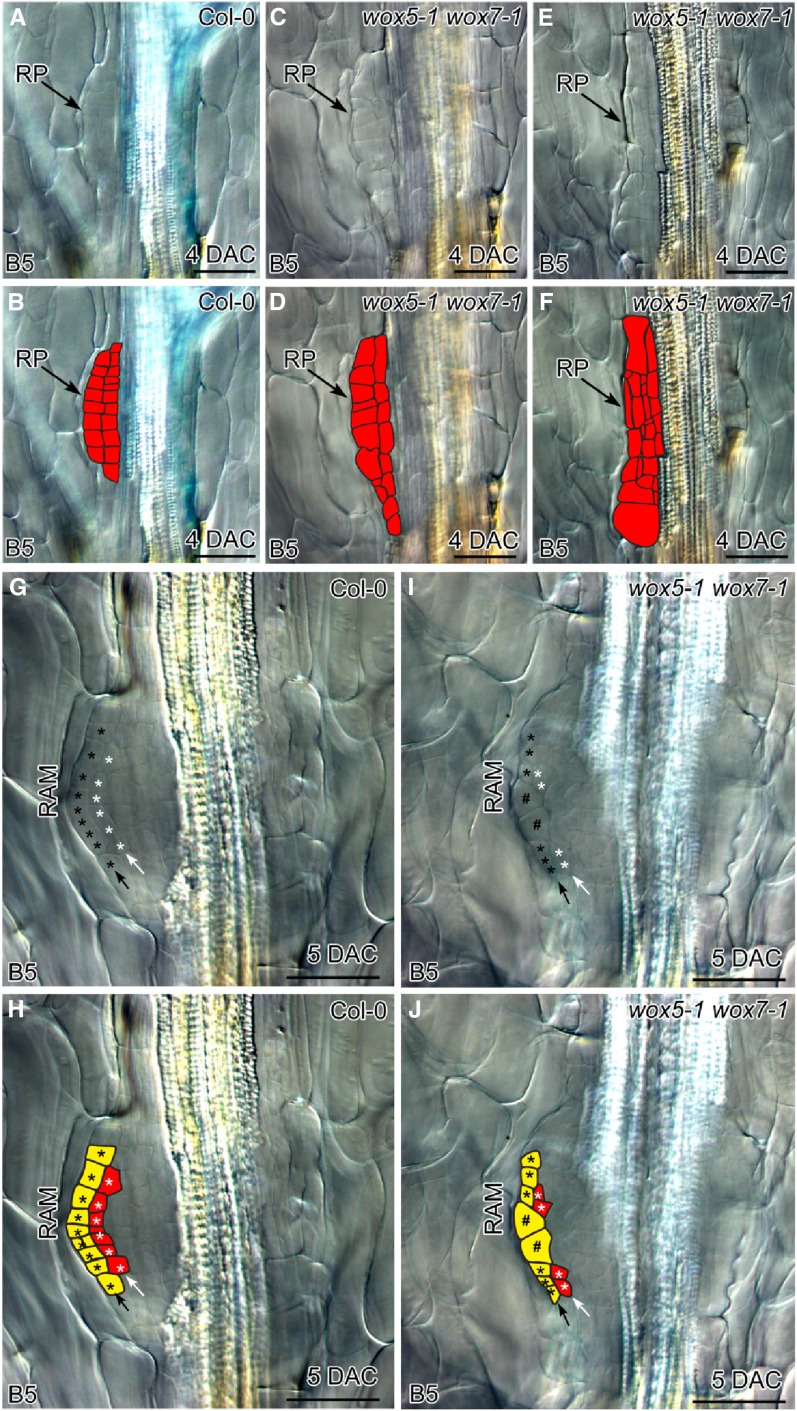Figure 3.
WOX5/7 are involved in cell division and tissue organization during adventitious root primordium formation. A and B, Adventitious root primordium in 4-DAC wild-type Col-0 leaf explant showing two layers of cells constituting the typical dome-shaped primordium. Note that cells in the primordium were approximately the same size, suggesting that cell division is coordinated between the two layers. C and D, Adventitious root primordium in 4-DAC wox5-1 wox7-1 leaf explant, showing mildly defective root primordium organization. Note that cell sizes differed within the primordium, indicating that cell division between the two layers was not properly coordinated. E and F, Adventitious root primordium in 4-DAC wox5-1 wox7-1 leaf explant, showing strongly defective root primordium organization. Note severely disordered cell division and complete loss of dome shape. G and H, Newly formed RAM in 5-DAC wild-type Col-0 leaf explant. Black arrow shows outermost layer that will develop into the root cap. White arrow shows the second layer, which will harbor the QC of the stem cell niche at its center. I and J, Newly formed RAM in 5-DAC wox5-1 wox7-1 leaf explant. Note enlarged cells in the center of the outermost layer (indicated by #) and absence of stem cell niche in the second layer. B, D, F, H, and J are schematics of each DIC image in A, C, E, G, and I, respectively. We analyzed 54 leaf explants from wox5-1 wox7-1 at 4 DAC; 29 showed mildly defective root primordia as shown in C and D, and 25 showed strongly defective root primordia as shown in E and F. We analyzed 30 leaf explants from wox5-1 wox7-1 at 5 DAC; 26 showed defective RAM organization as shown in I and J and four showed arrested development at the primordium stage with no RAM formation. RP, root primordium. Bars = 50 μm (A–J).

